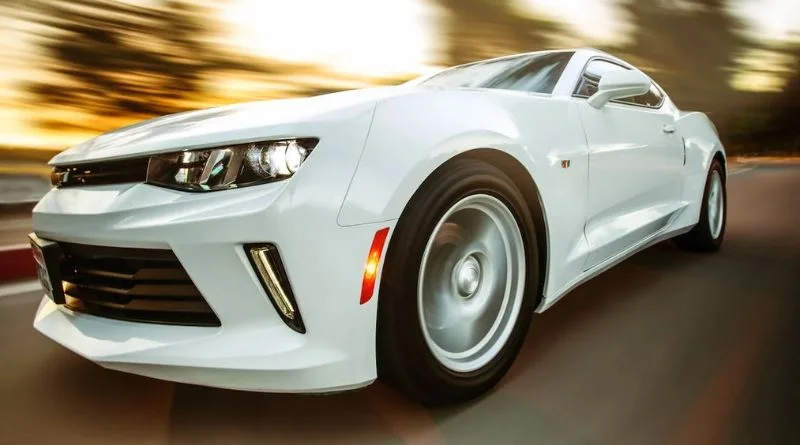Role of Actuators in Vehicle Bodywork
Last updated on July 19th, 2024 at 10:50 pm
When you look at vehicles, you easily see large parts like the windshields, tires, mirrors, and headlights. Inside, it’s also not difficult to see the dashboard, padded seats, and speakers. You won’t quickly spot all the smaller devices that the car can’t do without. Actuators are one of such small devices, and they have a range of functions in automobiles.
The focus here, however, is on vehicle bodywork — simply the exterior parts of the cars. You may think manufacturers do all these designs for just aesthetics, but that’s wrong. The bodywork is also essential for performance. It plays a noteworthy role in defining the aerodynamics and safety of vehicles.
What role do actuators play in vehicle bodywork? Well, there are quite many. However, we’ll highlight the top six ones here.
Active Aerodynamics
Active aerodynamics are critical when it comes to modern vehicle design, and at the core of this system are actuators. Consider spoilers and wings, for example. Without actuators, these parts can’t make real-time adjustments. The adjustments are essential because, as the car speeds up or rolls on different terrains, they help optimize downforce and improve stability. Hence, the vehicle can adapt to ensure optimal performance. Take actuators out of the equation, and you get a fixed aerodynamic setup.
Another noteworthy application for actuators in active aerodynamics is in front grille shutters. The primary role of these shutters is to manage airflow, which they do each time they open or close. Actuators ensure they do so efficiently.
The shutters close to reduce aerodynamic drag and open to cool the engine. This dynamic adjustment ensures the vehicle maintains efficient airflow. That way, the engine’s temperature remains steady and doesn’t affect the aerodynamic performance. With these, it’s clear that actuators are vital components for maximizing vehicles’ aerodynamic efficiency.
Also Check: Best Cars With Paddle Shifters
Convertible Roof Mechanisms
When you see convertible cars, you see luxury and elegance. However, behind that appeal are actuators playing a central role, especially when it comes to their retractable roofs. These motion devices ensure a smooth transition from a closed to an open top. Hence, they introduce the enjoyment that’s open-air driving with a simple push of a button.
A difference exists between hardtop and softtop mechanisms. Hardtops are more solid, so they rely heavily on actuators for lifting and folding the roof panels. Consequently, they’re relatively more complex and require more robust and precise actuators.
On the other hand, soft tops are typically fabric-based and lighter. Many still use actuators, but the mechanism is generally simpler and demands minimal force. Regardless of the type, actuators ensure convertible roofs operate seamlessly. Their role here highlights their importance in vehicle bodywork
Vent and Air Intake Systems
Vent and air intake systems are always in the discussion when talking about cars’ performance. Primarily, they help adjust air to optimize engine performance and cooling. In the setup, actuators act as managers, basically sending airflow in the right direction.
Engines will usually require more air in high-demanding situations. Here, the motion devices can open the vents wider for increased airflow. Similarly, if it’s a more relaxed drive, actuators also adjust to let in less air. One of the benefits here is higher fuel efficiency.
Furthermore, actuators help keep the engine at an optimal temperature by adjusting airflow. It’s a big plus, as it prevents overheating, which can be a serious concern during intense drives. With actuators in place, vents can adjust to provide more cooling. This management is essential not for performance alone but for engine longevity.
Must Check: Best Hybrid Cars For 2023 And 2024
Automated Panel Adjustments
Nowadays, you can find actuators in side skirts and rear diffusers of vehicles. This is another area where the motion devices help optimize aerodynamics. Actuators let side skirts adjust to improve airflow along the car’s sides. This means better stability, especially when riding at higher speeds.
For diffusers, you’ll typically find them at the back of vehicles. Their primary role is to manage airflow as it leaves from under the car. Actuators tweak their angles for optimal performance, and that also means more downforce and grip.
A third mentionable area here is the bumper. It used to be just a protector, but in modern vehicles, it’s far more than that. You’ll find many contemporary bumpers with sensors, cameras, and even lighting. Actuators help align these tech components inside the bumper, ensuring they’re more responsive.
Adaptive Headlight Systems
Adaptive headlights are game-changers, especially when driving at night. You can’t sideline visibility, and that’s why the role of actuators here is monumental. These motion devices carry these advanced lighting systems.
Manufacturers integrate actuators into the headlight assembly such that if the car’s sensors detect a change, they signal the motion device. This change can happen in steering angle or speed. Then, the actuator moves the headlight in the desired direction for extensive illumination. As a driver, you’ll appreciate this technology as it allows better visibility and enhanced safety.
Pop-out Door Handles
Pop-out door handles are one of the sleekest additions to modern vehicles. Their operating mechanism is simple, but actuators are still central.
When not in use, the handles stay stuck to the car’s side in the door panel. Then, you can activate the actuator by simply approaching the vehicle or pressing a button on your key fob. When you do that, the device activates and pushes the handle outwards within your reach. As you close the door, the actuator returns the handle to its flush position.
The above sounds like an applaudable luxury feature, but how does it aid performance? Well, away from the aesthetic appeal, such a streamlined profile reduces drag. Consequently, it can ensure less fuel consumption.
Conclusion
Actuators continue to play a key role in the evolution of modern vehicle design. As explained above, their role in the vehicle bodywork transcends just motion. They’re also workable when it comes to blending aesthetics with functionality. From improving aerodynamics with retractable elements to enhancing user convenience with pop-out handles, the applications are, indeed, vast. In essence, actuators have not only transformed how today’s vehicles look, but they also influence how they perform and interact with the environment.




